How to sow lawn grass?

Many owners of their own summer cottages or suburban areas want to know how to sow lawn grass. Indeed, step-by-step instructions can be very useful for those for whom planting seeds with their own hands is the first time. Any owner should learn how to properly manually sow a lawn in the country, and then take care of it.
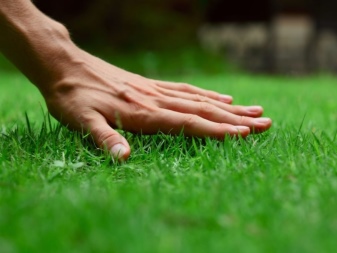

How to choose lawn grass?
The correct selection of grass for lawn sowing largely determines the purpose and appearance of the future lawn. The universal version of the mixture is far from always good enough, many other factors must be taken into account: the presence of shade and the amount of sun, the frequency of watering. Whether it is a perfectly trimmed golf course or a picturesque meadow with emerald greenery - it's up to the owner to decide.
You just need to understand that not all types of herbs take root well on different types of soil, and some plants are completely contraindicated in the neighborhood. It is not just the density of the crops that affects the density of the lawn. The ability of the plant to form bushy formations, as well as the general germination of the material, is also important.
It is better to make the composition of the grass mixture heterogeneous, using 3-4 components. In this case, the chances of good germination and an attractive appearance of the lawn throughout the season will be much higher.


The basic rules for choosing a mixture are directly related to the purpose of the site. Let's see what to consider.
- Parterre plots are sown with special compounds. They are the most expensive and require care and attention. Lawns of this type are not designed for walking, playing or other activities. Narrow-leaved, low-growing grasses that look good in short hair are sown here.
- The crumbling slopes and uneven terrain require sowing of plants with a developed root system. Here it is worth paying special attention to the speed and intensity of growth.
- Playgrounds and lawns require specific types of grass. Such grass can withstand high loads, the stems are easily straightened after crushing. Timothy has proven itself well here.
- Versatile garden lawns. It is enough to plant the simplest two-component mixture here. Most often, bluegrass and fescue are taken.
- Background lawns for flower beds. White clover is the best solution, but it should not be planted close to home or in places where children play. Honey bees are attracted to flowers.
- Moorish lawns made from a mixture of herbs and wildflowers. They are very beautiful, ryegrass is suitable as a base. You can independently obtain a similar effect by mixing flower-meadow and sod-forming plants. The basis should be laid bluegrass, fescue or field grass; among the flowers, you can give preference to perennials.



Given the climatic conditions, it is worth remembering that there are plants that easily adapt to different levels of moisture or soil composition. Ryegrass, bluegrass, fescue are considered to be such survival champions. It is they who can most often be found in the composition of universal mixtures. Such a lawn tolerates wintering well under the snow, is not afraid of spring frosts. Considering individual plant species, you can create your own mixture or choose a uniform lawn for your landscape.


Consider herbs that thrive on the site better than others and help control weeds.
- Red fescue. A frost-resistant plant that forms, in the absence of shearing, panicles-inflorescences of a characteristic raspberry shade.
- Pole grass escaping. Lawn grass with good decorative characteristics. Requires planting in shady areas, needs a lot of moisture.
- Meadow bluegrass. Suitable for autumn sowing, it is not afraid of frost and the vagaries of the weather, it tolerates direct sunlight well, it is drought-resistant.
- Microclover. An elegant option for decorative borders. The plant is not afraid of the sun, needs a minimum amount of moisture, it is very beautiful during flowering.
- Pasture ryegrass. A popular variant of flowering herbaceous grasses, forms a developed root system in a short time. This is a good option for public spaces or sports fields, suitable for reinforcing crumbling slopes. In the lawn mixture, ryegrass should be added in a volume of no more than 25%.
These are the main types of grasses that are included in lawn mixtures. In damp areas, you need to add moisture-loving plants: sandy wheatgrass, giant bent grass will do. On arid soils, it is worth mixing in sheep's fescue.



How to calculate the number of seeds?
The exact calculation of the number of seeds when sowing lawn grass always turns out to be more difficult than a novice landscape designer or an ordinary summer resident can expect. Much depends on the germination of seeds: the closer this indicator is to 100%, the better, since in the process of growth, for various reasons, up to 1/4 of the sowing volume is lost. To buy, it is worth choosing ready-made mixtures not older than 4 years, without foreign smells, traces of mold.
Lawn seeds are delivered in bags of 5-10 kg. You can calculate their rate per 1 square meter according to the following scheme:
- take the seeding rate in grams indicated on the package;
- multiply by the percentage for a particular species;
- divided by the percentage of germination.


There is a certain standard number of seeds that can be taken as an average. By weight, this is 40 g / m2, for light soils, the value is reduced by 1/4, for heavy soils, it is proportionally increased. On average, one hundred square meters have to spend from 3 to 5 kg of material. There are norms for single-species plantings, for example, for bluegrass it is 80 kg / ha or 5.3 g / m2.
It is worth considering the seasonality of the work. Before winter, you need to sow the lawn, increasing the volume of seed consumption by half. The density should be increased even if there are doubts about the germination of the planting material, as well as in case of probable drought, rare watering.
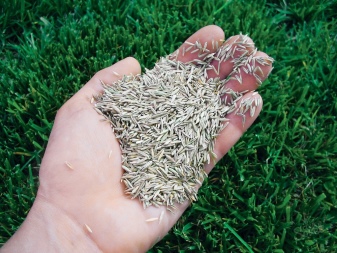

Terms and conditions of boarding
There are several important points to consider when choosing the optimal time for planting your lawn.
- Sowing in spring. This is done in May or late April. If the soil has been properly prepared in the fall, all that remains is to loosen the soil a little and sow.
- Planting in the fall. It is better not to choose this option the first time, as it is more difficult to implement in practice. Autumn sowing is poorly suited for regions with winter thaws and temperatures up to +10 degrees. You can sow at the end of September, so that the plants have time to rise, and also in October, for spring cultivation.
- Sowing in the summer. It can be produced outside the dry season. Seedlings will appear only in the rain, or you will have to spend a lot of time and effort on watering. This is the most inconvenient option, difficult to implement and unpredictable in germination.
Sowing for the first time is best done in the spring, after a good autumn soil preparation.


Step-by-step instruction
The technology of planting lawn grass is quite standard, it is enough to strictly observe all stages of work. In some cases, it is worth using additional devices: for example, if the area of the plot is quite large, it is easier to sow with a machine. The phased implementation of tasks will save you from mistakes, help you calmly and confidently cope with the work.
Soil treatment
At the dacha or personal plot, sowing a lawn always begins with choosing a place where a green lawn will appear. Sun and shade areas require different mixtures of herbs. Then you need to move on to preparation. The soil should be fertile, sufficiently moist, free of weeds. The sequence of preparation work in stages looks like this.
- Garbage collection at the site. Stumps are uprooted, branches, old grass, trees and shrubs that interfere with planning are removed.
- Relief preparation. The bumps are cut and leveled, the holes are filled up. If you need to place a lawn over a large area, you can further plan artificial irregularities, fill hills or lay streams, make a pond and paths. On a small area, a flat lawn of the correct shape looks more neat and well-groomed.
- Excavation. In most cases, the area for sowing lawn grass needs to be dug well. If it is located in a lowland, it will require a rise in the relief with imported soil. You can also use the land left over from construction or landscaping.


The outflow of water should be good, stagnant moisture is detrimental to plants, it can lead to the formation of bald spots or moss, mold. On clay soil, it is imperative to additionally make drainage to avoid such negative manifestations. It can be superficial, with a slight slope leveling for natural outflow of fluid.
An open drainage system is set up where excess water appears after the snow cover has melted or during the period of prolonged rains. In this case, you need to dig parallel ditches 20-50 cm wide at a depth of 0.5 to 1.5 m, cover them along the bottom with geotextiles, fill 1/3 of them with crushed stone, broken brick.
After that, you can fill the drainage system with soil and tamp it thoroughly. If the soil is swampy and very wet, a more serious drainage system will be required to plant a lawn on it. Closed drainage is equipped with laying pipes and organizing a well or gutter. The rest of the arrangement differs little from an open system.
The only thing is that it is better to close such ditches with special gratings through which water will be collected.
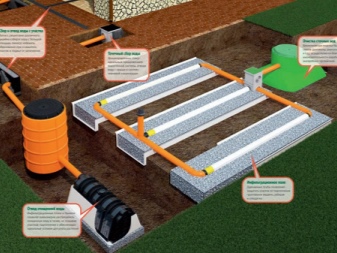

Digging
Earthwork is the most difficult stage in preparing the site for the future lawn. On a large area, it is worth stocking up on a cultivator, mechanizing the work being done. A small area can be worked with an ordinary shovel or pitchfork. If the landing is to be done in a place that has not been dug before, you will have to act like this.
- Remove the sod. Sometimes, if there are not too many weeds, it is enough just to dig deep into the ground. You do not need to loosen it later.
- Wait 2 weeks. During this time, the weed will have time to sprout.
- Weed or treat the lawn area with glyphosate chemicals. When using herbicides in combination with digging, they are applied after the first stage of the work has been completed. Otherwise, the performance will be reduced.
- Mark the boundaries of the future lawn. The spaced pegs will be especially useful if the lawn is located between trees or frames ready-made flower beds.


You can also land in unprepared ground. But on the overgrown area, some work will still have to be done. Proven weed control products will help you do without digging. Most often these are indiscriminate herbicides. It is necessary to treat all deciduous plants with Roundup, and then wait about 10 days for it to take effect. Then, on top of the cultivated area, fertile soil mixed with sand is poured, and the soil surface is leveled with this mixture. The optimum thickness of such a layer is at least 15 cm. The prepared platform will need to be rolled in.
Without digging up the ground, weeds can be removed by covering the entire area of the future lawn with a special geotextile with an opaque black structure. It is enough to withstand such a coating during the season, and in the spring you can use the place under it for planting lawn plants. This method is not bad because it allows you to do without the labor costs of digging the soil. It is suitable for functional and sports lawns where soil density is essential.


Rolling
After completing the main stage of digging up the earth, you need to thoroughly compact the site. This is necessary for:
- checking the evenness of the soil;
- preparing a seed cushion;
- exclusion of drawdown in the future;
- increasing the functionality of the lawn.
Neglecting compaction, you can see bald spots on the surface from torn blades of grass already at the first haircut. It will also be difficult to mow the grass - traces will remain. The simplest solution is a special hand-held roller with a long handle.
If it is not there, even tamping under the weight of your own weight and snowshoes or using other available means is suitable.


Irrigation system installation
It is produced at the stage of site preparation. If you plan to use the automatic version, equipped with sprinklers with retractable nozzles, you can lay water supply routes for it during the drainage phase.



Fertilizer
Special mineral complexes are introduced into the place of the future lawn before sowing. Ammophoska in a volume of about 4-5 kg per hundred square meters is considered a good choice. Nitrogen fertilizers will keep the lawn in good condition and give it the necessary stimulus for growth.
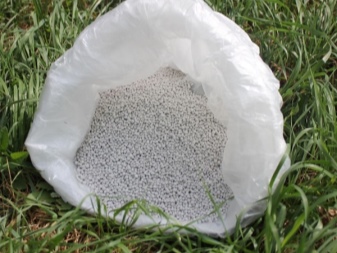

Sowing process
You can sow lawn grass in your yard manually - this process is not too complicated. You just need to prepare a convenient container for seeds and a rake or a roller for powdering, rolling the soil over the material. You can plant a lawn yourself by following the following scheme.
- Divide the entire volume of seeds into 3 parts. The two main ones are used for sowing. Another, smaller volume, is used for subsequent replanting in places where the plants will not come out. Mix both large parts with sand in a 1: 1 ratio, halve them.
- Sow the first of the two large parts longitudinally, trying to distribute the seeds evenly over the surface.
- Scatter the second part, moving in the transverse direction.
After all the seeds are in place, they need to be sprinkled a little with earth. This can be done with a rake. It is important that the seeds are not taken away by birds. For some plant species, darkness is very important - this is one of the conditions for their germination.


The seeding machine is a special tool suitable for use in large areas. It is difficult to distribute the planting material correctly and evenly in such volumes. The seeder can be made with your own hands, at home, and you can also choose a ready-made one. Purchased models have a hopper, there may be an additional dropper in the kit. Such a tool is also convenient for other types of work: fertilizing, mulching, sprinkling paths in winter.
When using a seeder, you must also follow a certain procedure:
- divide the sown area into zones of 1 square meter;
- pour the grain mixture into the seeder drum or its analogue in the form of a container (the volume per square is measured at a time);
- each selected area is traversed separately, in different directions: transversely and longitudinally.
A primitive-level homemade seeder can be made from an ordinary tin can with holes made in it. With the help of it it is convenient to measure the grass mixture when planting in squares.

Follow-up care
It is not enough just to comply with all the requirements for landing. It is also necessary to properly care for the lawn. Depending on the type of herbs selected for sowing, the first shoots will appear in 1-3 weeks. During this time, the ground should remain sufficiently moist.If there is no rain for a long time, it is necessary to organize watering using a watering can or a hose with a spray nozzle with a small hole size. It is important not to make too strong a pressure, otherwise the seedlings will simply be washed out of the ground. If there is an autowatering system at the germination stage, it is turned on for no more than 15-30 minutes every other day.
Weeding is also a compulsory maintenance measure. It is performed regularly throughout the entire period, while the seedlings remain weak and vulnerable. In addition to hindering the development of the root system, weeds are often carriers of fungal diseases and attract pests. When the grassy plants reach a height of 12-14 cm, you need to proceed to the first mowing of the lawn. It should be carried out using special devices that allow you to maintain a uniform cut at any length and thickness of the stems.

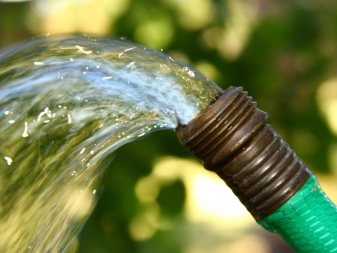
Useful Tips
It will be useful for a novice gardener to know that the work will go easier if all the necessary tools are prepared in advance. It is enough to stock up on:
- garden shovel;
- fan-type rake;
- a wheelbarrow for transporting soil;
- ramming devices (special roller or heavy pipe);
- tape measure or measuring tape;
- pegs and a rope for marking.
It is worth considering the rather common mistakes when landing. For example, in regions with a cold winter climate and low snow cover, it is better to wrap seedlings from freezing. If sowing takes place in the summer, it is worthwhile to carry it out immediately before the onset of heavy rainfall. This will avoid waiting for seedlings too long. Sowing in the rain or immediately after it is most sensible.
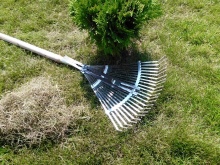


A beautiful lawn starts with the right planting. The following recommendations will allow you to get a good result.
- Choose simple, acclimatized mixes. For the Moscow region, a composition of bluegrass and fescue is suitable, giving a good density, easy to cut.
- Refuse from the continuous sowing of ryegrass or the choice of mixtures where it is more than 50% in the composition. The lawn will stand for 3-5 years, then it will lose its decorative effect.
- Choosing between a sunny area and a shady one, you should give preference to the first option. In the shade, many seeds germinate much worse, bald spots may form, the color of the grass will be paler.
- On an already planned site, the lawn is broken using a curb tape. It will allow you to avoid unnecessary overgrowth of grass in the future. In addition, the lawn looks neater in such a frame.
- Avoid planting your lawn close to trees or bushes. When the grass grows, the root collar of larger plants can rot. In the future, the tree or bush will simply die.
Taking into account all the recommendations and mistakes, you can easily cope with the task of sowing lawn grass on the site. Even a person without experience will be able to create a beautiful lawn near a house or summer cottage, to give originality to the landscape.


For information on how to properly sow lawn grass, see the next video.



































































Now it's clear why my lawn looks so bad. I did everything wrong. I will redo it according to your advice. Thank you for the article.
The comment was sent successfully.